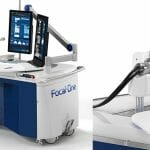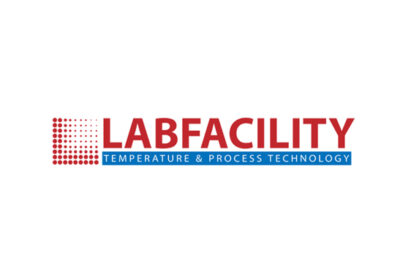Basingstoke, September 2014: LG Motion Limited has recently designed and supplied a semi-automatic parts handling and vision inspection system to Oxford MEStar, the Oxford University – Institute of Biomedical Engineering spin-out Company. Used for quality checking and product sorting of specially packaged ‘corneal scaffolds’ that are produced in the emerging technology of regenerative bioengineering, the system was urgently required and delivered quickly thanks to LG Motion’s design & production and motion control system integration service.
The cornea and its integral support scaffold, measuring about 35 mm diameter, is packaged in a sealed clear plastic blister pack measuring 80 x 100 mm. The near translucent items are suspended in a transparent gel similar to a ‘petri dish’ solution, making it difficult to determine their exact position with relation to the packaging. To resolve this initial challenge, LG Motion worked with imaging specialist Scorpion Vision to develop a suitable camera vision system to evaluate the appearance and location of the corneal scaffold. The basic machine requirement called for the vison system to be integrated with a two-axis (X,Z) linear positioning system and PC motion control software that included HMI screen prompts and status information. A technician operator would manually feed the packages into the machine and semi-automatic operation would then present the package to the vision system which then locates the scaffold position within 0.1mm. The data from the vision system is then used to reposition the scaffold to an optimal location within the full view of a customer supplied laser analysis system used to determine the condition of the cornea from its optical properties. Finally, the package would be accepted or rejected and transferred into pass or fail chutes for further processing.
Oxford MEStar approached LG Motion with an urgent requirement for the complete system, having developed and proven the laser inspection process within the laboratory. They required a modular automation system that could accommodate upgrade and modification as the project progressed. No stranger to special requests, fast deliveries and machine development flexibility, LG Motion was able to harness its experience and innovative approach to integrate multiple technologies in to a single, easy to use system. This was a preferred approach to the project, rather than specifically agreeing a rigid specification before commencing work – which would have extended the potential delivery timescale. LG Motion had also successfully worked with imaging specialists Scorpion Vision on past projects where machine vision and motion are integrated, and called them in at the early stages for recommendations and a solution for the scaffold location problem to help speed the machine design process.
The motion mechanics – custom stepper driven ballscrew positioning stages with single linear motion guide bearings – are designed specifically for the application to maximise the space on the work platform. With a 500 mm travel range for the horizontal axis and 50 mm vertical travel, the stages include manual drive wheels to allow the operator to position the axes under power-off conditions to maintain the machine. Unlike many motion control distributors, LG Motion benefits from full design, production and quality inspection facilities at its Basingstoke plant and the stages were designed, manufactured and built in-house along with the gripper mechanism, brackets and the fixtures for locating the imaging and laser inspection sub-systems. In this way, with bought-in parts kept to an absolute minimum, and the specification concurrently worked on as the project progressed, LG Motion was able to maintain timescales for the mechanical system.
The motion control system was also developed in parallel with the benefit of LG Motion’s modular application development front-end software – a series of ‘building block’ routines’ that allow its applications engineers to create HMI graphical user programs based around multi-axis motion controllers. The PC software works with stepper drives over Ethernet to build user friendly programs that synchronise motion and machine I/O. Whilst the front-end software is capable of complex machine control, the relatively straightforward repetitive processes which this machine required were easily taken care of.
The machine includes a host of safety and machine I/O with emergency stop, over-travel limits, home switches and other sensor interfacing. The HMI touch-screen displays the machine phases – loading the package, automatically locating the cornea and its scaffold, the laser inspection phase and pass or fail for acceptance or rejection – then prompts the technician to load another package. Move parameters, speeds, time delays and other adjustment features are included along with display of status information such as system state, axis position, I/O condition, axis and drive faults etc.
The machine is now in operation with Oxford MEStar’s production and research facility in China, where it is helping to develop and improve the quality of the cornea inspection process.









Leave a Reply